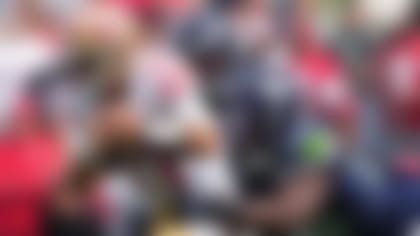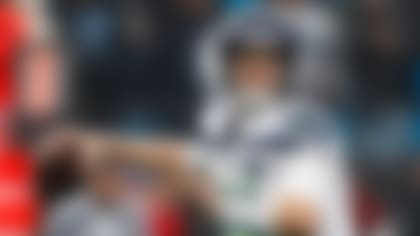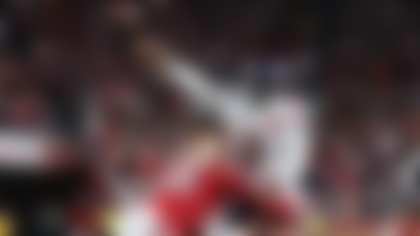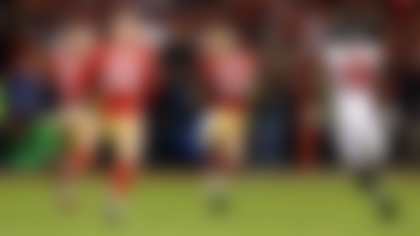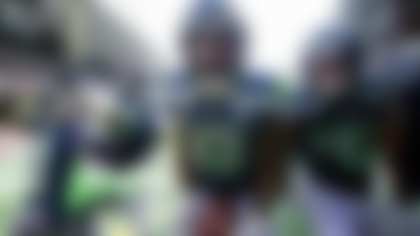The urgency of the NFL's most recent concussion crisis was underscored by the timing of the announcement that changes to its protocol are coming soon: on a Saturday evening, less than 48 hours after Tua Tagovailoa was taken off the field on a stretcher, with the investigation into the care he received just a week ago still ongoing, with one doctor already fired by the Players Association.
The games started again Sunday morning, just hours after the joint statement from the league and the players union signaled that a loophole that allowed players who stumble -- gross motor instability, it is called -- to return to the game if doctors deemed something other than a head injury caused it, will be closed. Going forward, that will be added to the list of "no-gos", the symptoms players exhibit that automatically end their game days. The language hasn't been worked out, the new protocol not yet finalized, but players, coaches and, most importantly, athletic trainers and doctors were put on notice in time for kickoff this week: err on the side of caution. That scene, of a player returning to action mere minutes after he had to be held up by teammates, cannot be repeated.
It made for a strange day of looking for wobbles and missteps, which is why the nuance of the protocol will be -- has always been -- so important. Among the multiple players ruled out with a concussion or head injury on Sunday were two quarterbacks: Tyrod Taylor of the Giants and Brian Hoyer of the Patriots. Making gross motor instability a non-judgment call is an obvious fix and it seems overwhelmingly like the right one.
Until a player who is playing with a bad ankle or knee stumbles.
"If you were to remove gross motor instability as a judgment call, then yes, anybody who stumbles would be ruled out," Dr. Allen Sills, the NFL's chief medical officer, said on Sunday morning.
That means that Julian Edelman, whose stumble after taking a hard hit in Super Bowl XLIX led to a concussion test that he passed, allowing him to return, would have been removed from the game. Even though he later said he stumbled because he had suffered a hip injury earlier in the game. Would keeping him out of the game have been a shame if there were no head injury? Sure, and outrage would have followed.
The league and union will work to find language that mitigates unintended consequences as much as possible. But the bottom line is that we should probably get more comfortable with the possibility of a player missing time in the name of preserving his brain's health, even if it comes at the occasional expense of a player being removed even if the instability was caused by a different injury. That will require a significant shift in what we value in games.
"Our goal is to get them out and not let them play," Sills said of unstable players.
Tagovailoa and the Miami Dolphins said his instability last Sunday was caused by a back injury and he passed his concussion test that day and in subsequent days, which is why he was allowed to play on Thursday night.
No protocol, no matter how airtight, eliminates the need for common sense, though. Tagovailoa wasn't just unstable last Sunday. He had hit his head hard. He shook his head in an attempt to clear it. His teammates had to hold him up when his knees buckled. He passed the concussion test in the locker room and the back injury was offered as an explanation.
The team doctor and the unaffiliated neurotrauma consultant -- most are neurosurgeons and neurologists, many chairmen of local neurosurgery departments -- agreed it was safe for Tagovailoa to return to the game. While the letter of the protocol says the decision is ultimately the team doctor's responsibility, Sills emphasized on Sunday that these decisions are always -- always -- unanimous.
We won't know what went wrong until the review is complete -- Tagovailoa is expected to be interviewed this week -- and it is entirely possible that the protocol was followed perfectly. That doesn't mean the outcome was the correct one.
The NFL has vowed to be transparent with the report and it is important to know how those doctors reached their conclusion. The NFLPA determined it knew enough by Saturday afternoon. It exercised its right to fire the unaffiliated neurotrauma consultant who evaluated Tagovailoa, with NFL Media reporting that the NFLPA cited a failure to understand his role and hostility during the investigation process.
While the details of the protocol changes are hashed out, Tagovailoa's situation should also force an examination of the mindset that pervades the sideline. The default position in football -- in sports in general -- is to get a player back on the field as soon as he is able, not necessarily when he is well or not impaired. Tagovailoa missing a half of football last Sunday because of an abundance of caution would have been a far better outcome than what happened -- putting him back on the field that day, and allowing him to play again on Thursday, when the seriousness of the head injury he suffered might have been exacerbated by the blow he took last Sunday. It's a long season and hopefully a long career and a long life. The idea and the job of so many people is to protect a player not just for this one game or even just this one season. The idea with brain injuries is to protect his future, too. Even if the protocol was followed, all of those who made the decision to put Tagovailoa back in the game last Sunday failed him and failed to execute what should be their mission.
Players will almost always push to play, and some coaches surely apply pressure to players and doctors, too. Players are adults and must have a voice in their own care, but there have to be other adults in the room, too, who will push back to protect players from themselves. Were there any of those people in the locker room with Tagovailoa? When Justin Herbert suffered an injury to his rib cartilage that left him in pain and impaired, there were questions about why Chargers coach Brandon Staley didn't pull him, particularly last week, in the late minutes of a blowout loss. Herbert should have been protected, and Tagovailoa, because his head was involved, doubly so.
The NFL and NFLPA have developed an uncomfortable pattern -- a frightening hit or injury leads to a policy change. The concussion protocols were created in 2011 after Colt McCoy took a helmet-to-helmet hit in a game and returned without ever being tested for a concussion. Changes were made to help spot hits to the head after Tom Savage returned following a gruesome hit in 2017, and after an investigation said the protocols were followed but the protocols were flawed. Now more changes -- these, very unusually, to be enacted in the middle of the season -- in the wake of the Tagovailoa injury.
Until there is a black and white assessment for concussion, though, there will still be judgment calls. It's not just the judgment of doctors that should be scrutinized. It's also how much caution everyone else can accept in the name of player safety.
Follow Judy Battista on Twitter.

